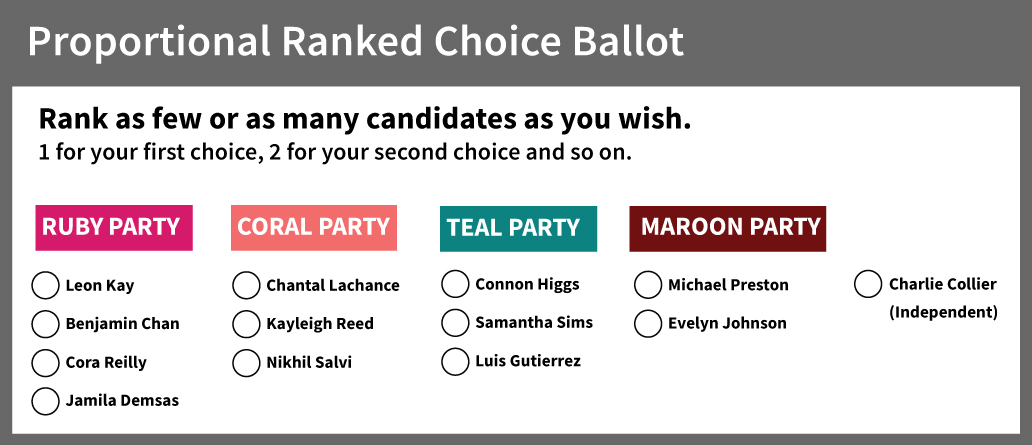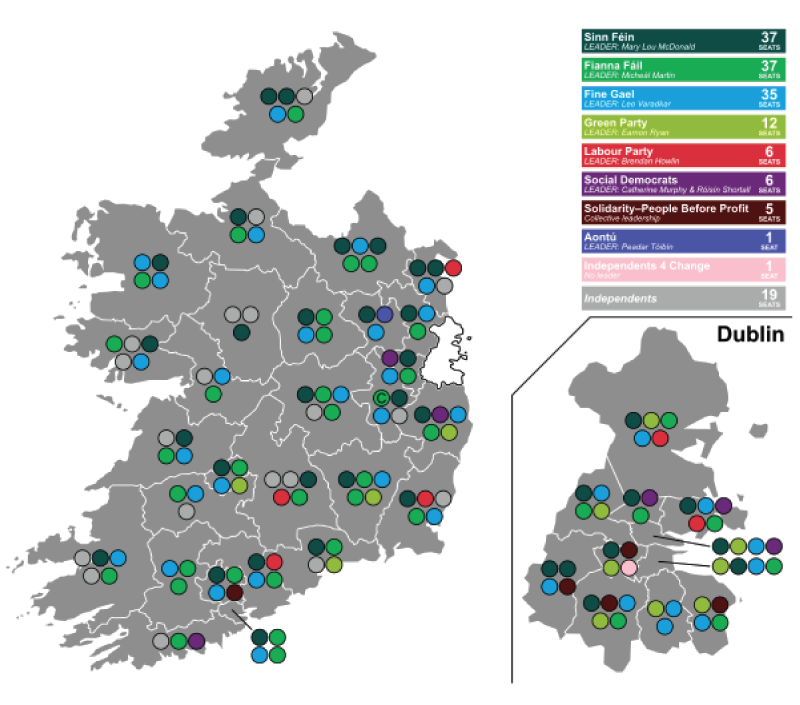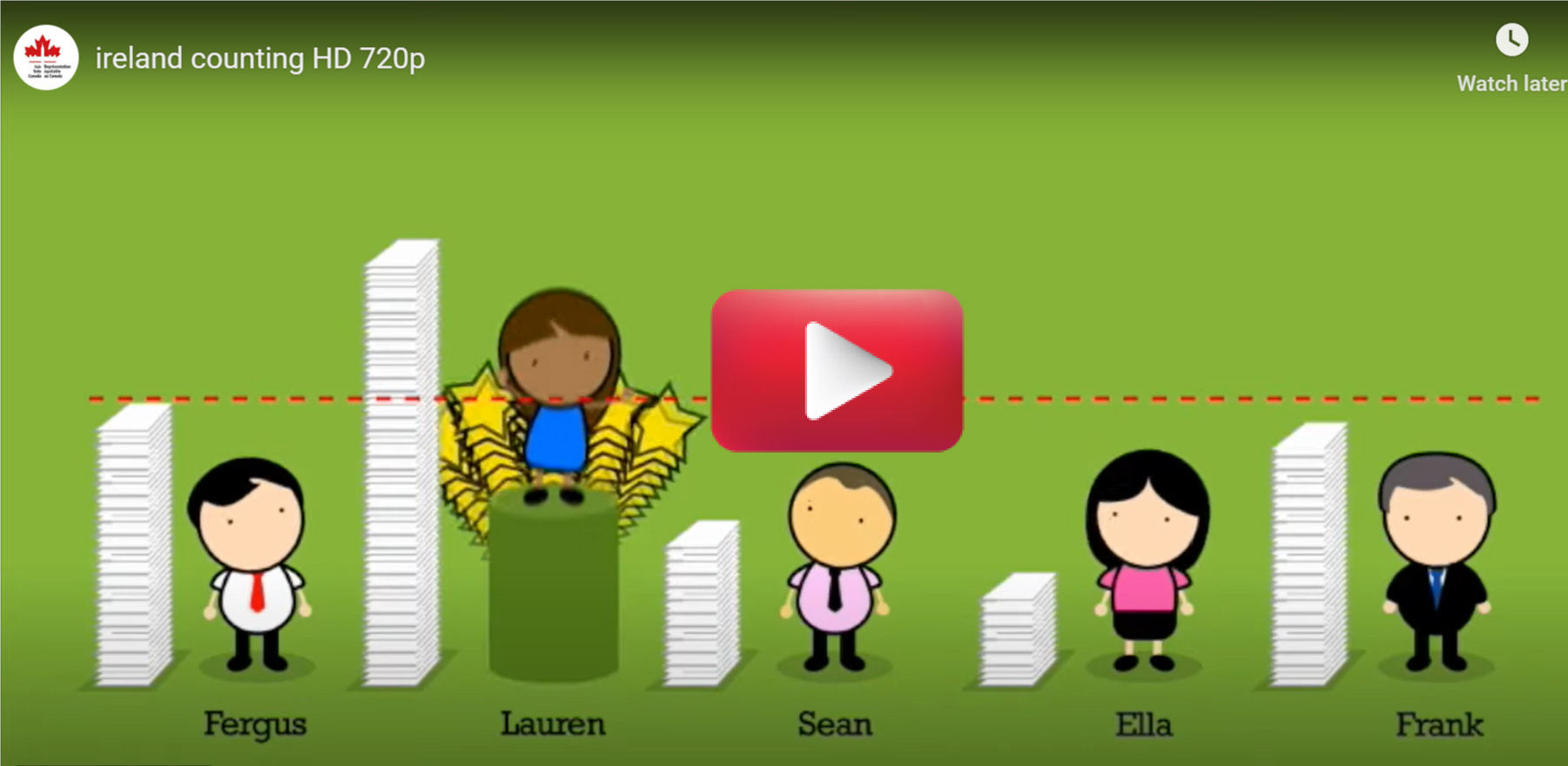Proportional ranked choice voting
More voter power, proportional resultsProportional ranked choice voting
(also known as Single Transferable Vote – STV)
NOTE: When people hear the term “ranked ballot” they often think of the non-proportional system that Justin Trudeau likes. This system, properly called Alternative Vote, just pastes a ranked ballot onto our current system, and delivers results as bad (or even worse!) than first-past-the-post. You can learn about why ranked ballots in single member ridings are no solution here.
Proportional ranked choice voting allows voters to rank their choices 1, 2, 3 etc. instead of a single X.
It also provides more than one MP per riding. That’s how it delivers proportional results in Parliament.
Proportional ranked choice voting was recommended by the British Columbia Citizens Assembly (2004), and called BC-STV.
The top three values of the BC Citizens Assembly were proportional representation, local representation, and voter choice. BC-STV went on to receive 58% of the vote in the 2005 referendum.
Proportional ranked choice voting is used nationally in Ireland, in the Australian Capital Territory and Tasmania, and in Scotland for local elections. It was recently adopted municipally in Portland, Oregon.
Proportional ranked choice voting was used to elect provincial MLAs in Winnipeg, Calgary and Edmonton for 30 years. It is the original proportional representation system.
Read the PR-STV part of our submission to the federal Electoral Reform Committee.
How it Works
Instead of electing just one MP in each single member riding (first-past-the-post), voters elect a small team of MPs in a multi-member local district.
This better reflects the political diversity that exists in every area.
Proportional ranked choice voting is a candidate-centered system which allows voters to rank candidates based on what characteristics are most important to them.
It also offers popular independents a chance to be elected. It is the system that gives voters the most nuanced say over who fills the seats.
For voters, using proportional ranked choice is simple. Rank candidates (as few or as many as you want) in any order you like. You can rank across party lines.

A note on counting the ballots
Counting the ballots is more complex than first-past-the-post, because voters’ preferences are taken into account. This ensures that the MPs elected reflect the rankings that local voters marked on their ballots.
There are many excellent videos on counting on youtube, including on the systems playlist of our youtube channel. To get the basic idea of how the ballots are counted, we recommend this short video.
Example: Ireland
Note: Proportional ranked choice voting does NOT require a larger number of MPs. Instead of ridings electing one MP each as we do now, ridings would be combined and the enlarged riding would elect a small team of MPs. For example, the BC Citizens’ Assembly recommended ridings that elected between two and seven MLAs (it varied based on geography). This ensures that almost every voter ends up with at least one MP who shares their values and priorities.
Below is a map of recent election results in Ireland. Each riding elects several local MPs to reflect the diversity of political opinion in the area. This means that voters have more than one MP working on policy in the legislature (often MPs in government and in opposition) and advocating for the interests of each local area.


